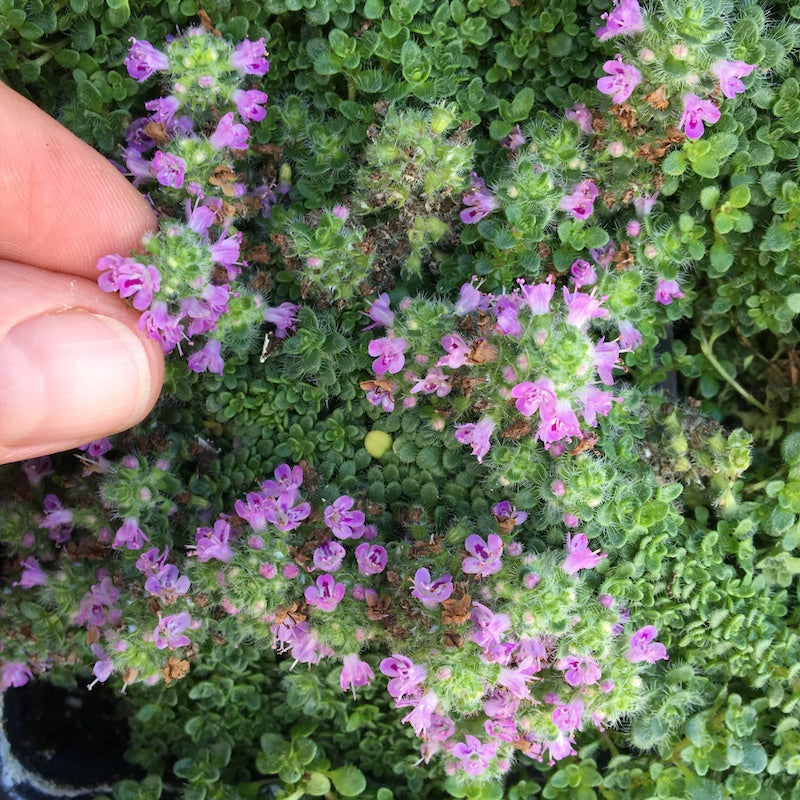

The downside to growing this ground cover is that it can crowd out some small plants.
#Pavers and elfin thyme ground cover full
Baby tearsīlue star creeper requires well-drained soil and full sun for best results.

The “Deep Blue” cultivar is a favorite for darker blue flowers that don’t fade. This semi-evergreen, tiny-leaf plant cloaks itself with small, sky-blue, star-shaped flowers from late spring into summer, and continues with a sprinkling of blossoms for the rest of the season into fall. Drought tolerant during West Sound’s rainless summers, it’s a choice plant for xeriscapes.Īnother prime plant for between pavers is the charming blue star creeper - Isotoma fluviatilis, sometimes sold as Pratia pedunculata or Laurentia fluviatilis. Baby tears dies back to the ground during a hard freeze however, it faithfully returns in spring. The less traffic on the ground cover, the lusher it looks. It isn’t foot friendly on a main path, however. This plant often spills down rock walls onto a gravel pathway below. In some local gardens, it can circle around small Chiastophyllums and will cozy up to ferns, shrubs and trees. It’s especially lovely when it drapes down rock walls like a cascading waterfall.īaby tears (Soleirolia soleirolii), another Mediterranean plant, grows well in our climate, and spreads indefinitely. Don’t let its delicate appearance fool you it’s a tough little herb that will grow with little maintenance. Its miniature, aromatic foliage covered in fine hairs gives the green leaf a soft, woolly, silvery gray-green semblance. Woolly thyme (Thymus pseudolanuginosus) is another low-growing thyme.

Every summer for a few weeks, the plant covers itself with little, purple flowers. Superb growing on top of a rock wall, the tiny-leaf plant trails down and softens the hard edges between the stones. This small herb creeps over the edges of the stones wherever there are fewer footfalls. When planted under full sun, in well-drained soil, they are carefree plants once established.įor a tiny thyme, try elfin thyme (Thymus serpyllum “Elfin”), sometimes sold locally as Thymus minus and Thymus “Minimus.” The minuscule, evergreen leaves tightly packed together form a dense mat, which outlines the space between flagstones in a deep-green hue. Thyme is drought tolerant, which is important for xeric gardens in the rain shadow areas on the peninsula. Several cultivars and species do a fantastic job covering the ground. Walk barefoot down a path covered in low-growing thyme and find it’s good for the soul and the soles. When stepped on, their spicy thyme fragrance releases into the air. Some great choices for pathways are the popular ground-covering thymes (Thymus). For plants that grow an inch or two above the soil, it’s surprising how much visual impact they can have. Many of these plants creep or romp around the garden and surround larger vegetation. These plants provide textural interest as edging along walkways or in between stepping stones and pavers. Providing interesting textures and colors, the shortest of the short such as creeping thyme, Corsican mint, Irish and Scotch moss, and others cover the soil as they crawl over and furnish a cohesive element in the garden. A favorite look in many gardens is flagstone surrounded by a carpet of ground covers.


 0 kommentar(er)
0 kommentar(er)
